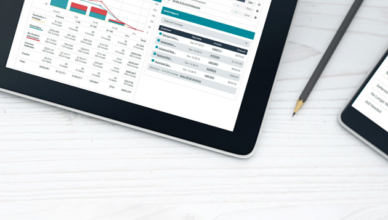Finance leaders who are currently budgeting for automation projects and planning for transformational change in 2019 have an opportunity to make a significant impact based on the types of projects they undertake. Yet so many CFO’s and Controllers lack the necessary information to do so and struggle to make automation investment decisions within the credit to cash cycle. Top companies understand that it’s not about doing the most work, it’s about doing the most important work. Here are three projects that should make the short list in 2019:
Highest Impact – Least Resources
In collecting cash, it may seem like every project is a priority. The key is to consider what most have documented as having the greatest value with the least impact on accounting and IT resources: automated payment reminders. A function that is often manually done for most companies can quickly be set up to automatically generate fully customizable payment reminders based on delivery preferences at the company, customer group, or at the customer level. Messaging can be tailored based on level of severity (e.g., neutral tone within 30 days, stronger wording over 60 days, collections action over 120 days, etc.) Collectors can track delivery status and read-receipt status, as well as bounced emails. Automated payment reminders are a simple, yet completely underestimated collection tool. Read how automated payment reminders helped reduce manual duties at LinPepCo, significantly reduced their DSO, and virtually eliminated customers in the 90- day past-due category here.
Customer Experience First
What will have the greatest and most immediate positive effect on customers? A project holding unlimited potential for customers and improving their customer experience? Simply, be easier to do business with. By providing a customer portal that gives them a place to view and pay their invoices, download their statements, apply credits, request a payment plan, sign up for autopay, dispute an invoice, communicate with your AR staff, and so forth is crucial to improved customer satisfaction. Providing your customers with a bunch of these self-serve options will reduce the need for your customers to contact you as much for their account management and billing needs, thus, giving your team much needed time back to focus on other aspects of collecting cash and managing your receivables. Learn how Trek utilized a global customer payment portal to reduce their DSO in this case study.
Compliance – External Functionality That Compliments Existing ERP Investment
There’s often a struggle between deciding upon new products and features verses the need to optimize existing technology to reduce costs and facilitate a greater return on your investment. It’s not always obvious which way to go. Sometimes the best strategy is to find a way to do a little of both. It’s easy to get carried away with all the great new automated processes out there, especially solutions that promote doing more things at once. I’m not sure that’s always the most cost effective or efficient route. E-invoicing customers, for example, is probably already set up in your ERP. However, e-invoices sent to customers outside of the US may not comply with local country regulations and requires being handled manually.
Every country has its own specifications in terms of formats, required fields and platforms by which e-invoices must be sent. Italy is the first European member state to mandate B2B e-invoicing as of January 1, 2019. Any company that does not comply with Italy’s requirements and does not issue e-invoices in the required format faces heavy sanctions. If you’re VAT registered in Italy and currently sending your customers invoices electronically, but have not automated the delivery, the reception or fiscal archiving of e-invoices in compliance with country regulations, the financial impact could be significant for you. You do not need to revamp your entire e-invoicing process. Maintain what works, but consider investigating e-invoice compliance requirements for doing business outside of the US, to supplement your invoice delivery process. For more information on Trends & Developments in the e-invoicing market, read this interview with Bruno Koch from Billentis.
With emerging technologies combining process automation, artificial intelligence, and data analytics – and all promising to generate significant efficiencies, cost reduction, and improved quality for businesses, no wonder it’s challenging for financial leaders to commit to digital transformation projects. However, if you’re ready to do what top companies do and have an unrelenting focus on efficiency – challenging what to stop doing, as well as what to automate, a good place to start in 2019 is automating payment reminders, providing a better experience through a customer portal, and compliment your existing e-invoice process to meet global B2G & B2B compliance.

